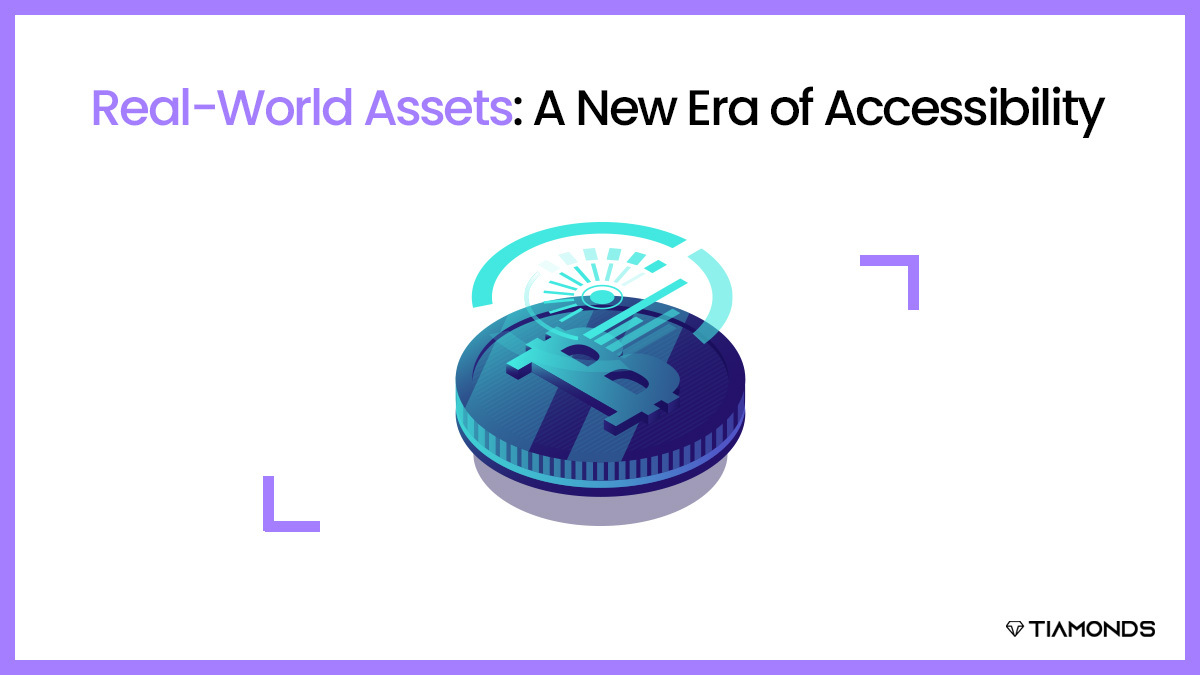The world is at the starting point of a new phase in which the merging of digital and conventional finance will usher in profound social and economic changes. Technological advancements have eliminated barriers to entry. It grants individuals access to wealth-creation prospects that were previously exclusive to the privileged few. Prominent in this paradigm shift is the development of tokens, particularly those representing tangible assets. These include assets like equities, bonds, and real estate, among others. There has been a positive wave around the future of real-world assets.
By redefining asset ownership and trading, tokenization is providing access to financial opportunities that were previously inaccessible to a great number of individuals. This transition not only causes a transformation in market dynamics but also establishes the groundwork for a future in finance that is more equitable and accessible. The one in which freedom and empowerment are not merely ideals but concrete realities.
Table of Contents:
Toggle
The Future of Real-World Assets: Appriciating Investments
Instead of holding cash, having the capacity to invest funds in assets is an absolute necessity for every household that wishes to prosper. Often considered a secure investment, cash’s value is steadily diminishing due to inflation. It is worth noting that $100 in 2004, when left idle, would be equivalent to only $60 in purchasing power today. In contrast, considering the ever-changing nature of the stock market, an equivalent investment in the S&P 500 during the corresponding time frame would have quadrupled to a remarkable $470.
However, an obvious disparity in stock ownership is evident in the landscape. The top ten percent of wealthiest individuals in the United States control an overwhelming 93% of equities. This demonstrates a pervasive disparity in financial access and opportunity. Private credit and private equity industries frequently close their doors to ordinary investors, further exacerbating this disparity.
Tokenization Market: The Future of Real-World Assets
The potential market for tokenization is enormous, with real-world assets worth hundreds of trillions of dollars awaiting listing on the blockchain. Boston Consulting Group projects that by 2030, the tokenized asset market will have expanded to an astounding $16 trillion. We are still in the early stages of this transformation, currently capturing only about 0.03% of the overall market size. This period of limited market penetration presents a golden opportunity to forward-thinking asset managers, institutions, and investors who desire to position themselves on the precipice of a paradigm shift in finance.
Nevertheless, traversing this ever-changing terrain is not devoid of obstacles. Global regulatory frameworks differ considerably, leaving asset managers and investors with a complicated array of compliance obligations. The presence of inconsistent regulations presents a significant challenge, as organisations are required to adjust and adhere to various legal criteria across different jurisdictions.
Notwithstanding these obstacles, the opportunity that tokenization of tangible assets presents is of such magnitude that it is unwise to disregard it. Investors, institutions, and innovative asset managers who wish to capitalise on this shift should form partnerships with tokenization pioneers in order to seize this unprecedented opportunity to be at the vanguard of a financial revolution.
Advantages for Adopters and Users
Rwa tokenization provides an extensive array of advantages for a wide variety of consumers and adopters. This versatility contributes to the concept’s captivating nature. Examine the various benefits that RwA tokenization can provide to parties:
Buyers
1. The implementation of RWA tokenization enables users to acquire fractional ownership stakes in high-value assets. Thereby enhancing the accessibility of investment opportunities.
2. The blockchain enhances transparency by providing purchasers with real-time information about the efficiency of their assets.
3. It guarantees expedited conversion into cash for assets that have historically been illiquid by providing short-term liquidity alternatives.
4. By expanding their portfolios internationally, investors can mitigate risk and increase the likelihood of maximum returns.
5. The blockchain facilitates expeditious transactions, thereby enhancing the convenience and speed of investment and trading.
Sellers
The future of real-world assets tokenization has immense potential and provides businesses with access to capital previously restricted by illiquid assets. This enables them to finance new ventures or expand their operations.
Enhanced Liquidity: This feature facilitates the trading of asset tokens by proprietors, thereby augmenting liquidity.
Reduced Transaction Costs: The implementation of blockchain technology guarantees that the vendor receives a greater portion of the proceeds, thereby minimising transaction costs.
The Future of Real-World Assets tokenization
Real-world assets tokenized are not expanding in isolation. Indeed, during this new financial dawn, no single form of digital asset will hold a monopoly. On the contrary, the full potential of digital assets becomes apparent when various types of digital assets interact with each other. Tokenized tangible assets, Central Bank Digital Currencies (CBDCs), and cryptocurrencies such as Bitcoin emerge as the fundamental pillars of this contemporary financial environment. Each has a distinct function and has the ability to enable its counterparts to accomplish more than they could individually. For instance, allowing investors to purchase equities, bonds, and real estate with cryptocurrency provides crypto investors with entirely new investment opportunities to diversify their holdings.
The coexistence serves as evidence that advancements and financial inclusivity do not require one to take precedence over the other. Rather, they flourish through the integration and support of one another. As time advances, the future of real-world assets has the potential to fundamentally transform economic interaction and empowerment, going beyond mere investment and currency.




